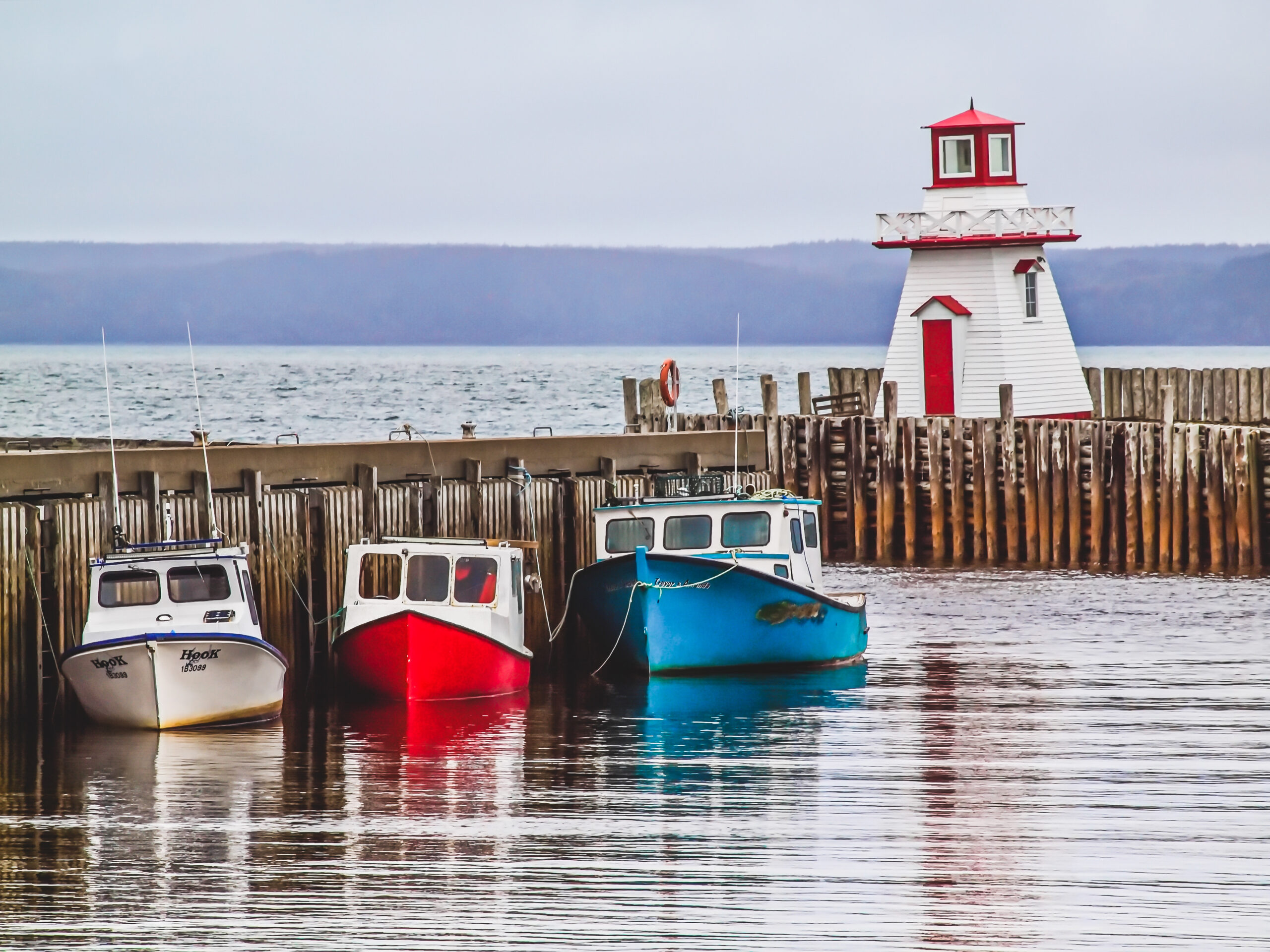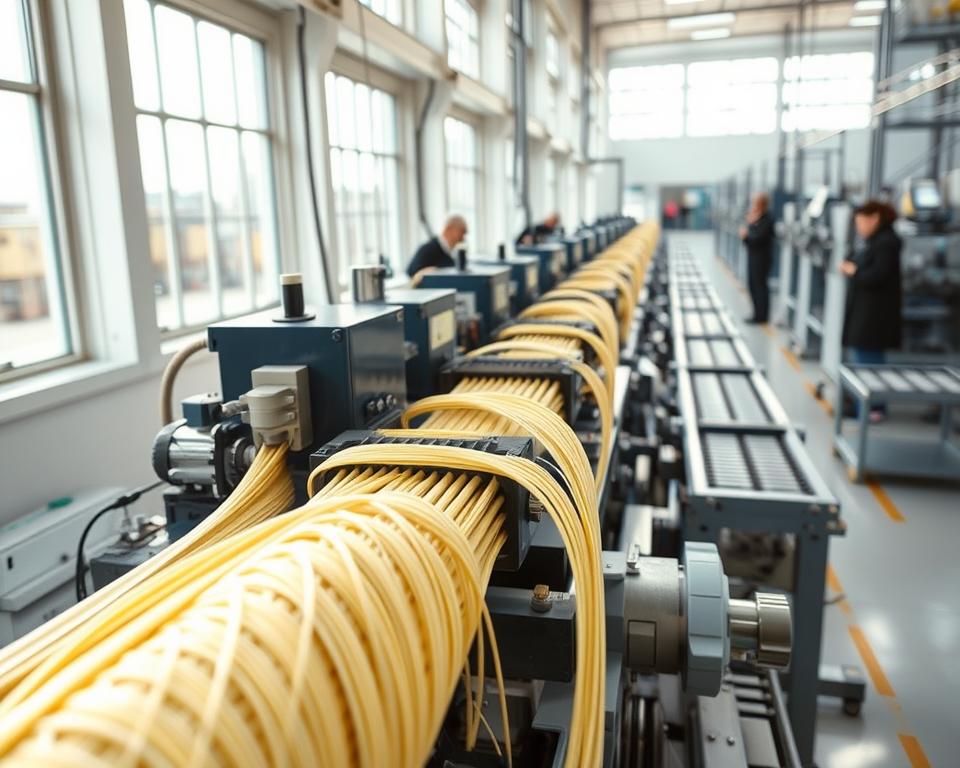Grasping Optical Fiber Auxiliary Covering Processes
Have you heard that more than 90% of global online data flow depends on fiber optics? This information emphasizes the importance of every element in optical fiber cable production, particularly the fiber auxiliary coating line. These systems are crucial for guaranteeing the fiber optic cables’ strength and functionality.
This write-up will delve into the complexities of fiber auxiliary coating systems. We will discuss their essential function in protecting fiber optics. Furthermore, we will look into how these setups improve fiber strength and efficiency. This knowledge is vital for those working in SZ stranding line industry and production.
Introduction to Optical Fiber Technology
Fiber optic technology has revolutionized communication, using optical signals over electric currents. This technique guarantees rapid connections with negligible data degradation. At the heart of this technique lies the foundations of fiber optic communications. These basics are supported by a complex structure. It comprises a center, encasing, layer, support fibers, and a shielding cover. Each component is crucial for the technology’s efficiency.
The technique’s incorporation into telecoms has transformed our communication landscape. It effectively handles high data traffic, supporting internet, voice services, and broadcasting channels. As a result, fiber technology not only enhances efficiency but also ensures dependability worldwide.
Exploring Fiber Auxiliary Coating Lines
A fiber secondary coating line is a assembly of dedicated machines and processes. It coats defensive layers to fiber optics after production. This auxiliary layering is crucial for the fibers’ durability and operation. It protects them from external and physical dangers. The significance of coverings in maintaining fiber optics’ integrity is evident.
Meaning and Relevance in Optical Fiber Manufacturing
The additional covering procedure is critical in fiber optic manufacturing. It consists of layering the optical strands with a polymeric covering. This cover protects the fibers during setup and functioning. It extends the durability of fibers by minimizing wear from flexing, abrasion, and pollutants.
Without these coverings, fibers would be prone to splitting and functional problems. This process is vital for preserving the optics’ strength.
The Purpose of Layers in Safeguarding Fiber Optics
Coverings are essential in maintaining the light transmission and structural integrity of fiber strands. They serve as a defense against physical stress and environmental conditions. The role of layers is evident; they boost the optical fiber strength. This guarantees smoother deployment and a extended lifespan.
This attention to additional covering is key for those in fiber optics. It’s a aspect that significantly impacts the optical fiber’s functionality and longevity.
Components of Fiber Secondary Coating Lines
The optical fiber auxiliary coating system is a intricate setup, including multiple vital elements. These elements are crucial for manufacturing top-notch outputs. They aid in understanding how a fiber optic secondary coating machine functions and what it needs to function properly.
Main Equipment Overview
Primary tools like fiber pay-offs, gel applicators, coating machines, junction units, and cooling systems constitute the heart of the secondary covering process. Each tool is vital for the layering operation. For illustration, the polymer applicator heats the coating material, and the junction unit applies it consistently around the fiber. These components must work together to guarantee consistent manufacturing and output excellence.
Raw Materials Used in Coating
The pick of materials for covering is essential for reaching the desired performance. Ultraviolet-hardened acrylic substances are often chosen for their superior protective qualities. These compounds protect the strand, increase its durability, and boost overall performance. The right mix of substances guarantees the completed item conforms to regulatory benchmarks and user needs.
Exploring the Auxiliary Covering Operation
The additional layering procedure is vital in the production of optical fibers, offering vital safeguarding to the recently created strands. This step involves the application of protective materials to boost the fiber’s resilience and operation. The timing of this process is essential; it guarantees optimal adhesion, thus cutting down on waste and enhancing manufacturing productivity.
Producers employ multiple layering techniques, including extrusion and gel application, to customize particular covering characteristics and depths. Each approach brings specific perks, suited for various optic uses and demands. As the demand for top-notch fiber strands escalates, improving the secondary coating process is essential. It is crucial for adhering to industry benchmarks and pushing covering innovations.
Role of the Draw Tower in Secondary Layering
The optical fiber drawing structure is vital in the production of fiber optics. It extracts strands from preforms while adding shielding layers as they solidify. The quality of the draw tower is vital, influencing the layering’s success.
Operation of the Extraction Structure
The extraction structure heats the initial shape before extracting the optic at a regulated speed. This operation is vital for preserving the fiber strand’s durability. As the optic emerges, layers are coated instantly for consistent shielding against external and physical harm. The structure of the extraction system provides optimal coating application timing and attachment.
Link Between Drawing System and Layering Effectiveness
The draw tower’s quality has a direct effect on the covering’s outcome. Variations in the fiber pulling procedure can result in uneven coating thickness, affecting the optic’s functionality. Superior drawing systems eliminate these problems. A consistent covering arrangement boosts mechanical performance, making the FTTH cable production line more durable and useful in diverse operations.
Traits of Superior Auxiliary Coverings
High-quality coatings are essential for the performance and reliability of fiber optic systems. They must comply with rigid mechanical and optical standards to guarantee communication clarity. This knowledge helps producers in developing more consistent outputs.
Mechanical and Optical Performance Standards
Auxiliary coverings need to exhibit outstanding mechanical properties. They must withstand physical strain and maintain effectiveness across diverse environmental settings. This requires adhering well to the glass core and stopping size changes. Furthermore, they should boost optical clarity, facilitating fast information exchange with reduced data degradation.
Importance of Adhesion and Resistance to Delamination
Adhesion of the coating to the optic’s nucleus is crucial for the technology’s strength. Without robust attachment, the likelihood of layer separation grows, likely resulting in malfunctions. Superior layers are engineered to prevent layer separation, ensuring durability and consistency across different applications. This resilience not only extends the fiber optics’ lifespan but also enhances functionality, underscoring the need for picking high-quality layering compounds.
Innovation in Auxiliary Covering Systems
The evolution of auxiliary covering systems is pushed by the quest for productivity and top-notch output. In the fiber optic industry, the use of advanced covering tools is increasing. These improvements highlight real-time monitoring systems and enhanced extruder designs. Such systems enable producers to uphold superior guidelines while streamlining production processes.
Improvements in Secondary Layering Machinery
New developments in auxiliary covering systems have transformed manufacturing capabilities. New coating machines now provide accurate regulation over the coating process. This causes better consistency and functionality in the end output. Robotization and intelligent setup incorporation further enable quicker manufacturing processes with minimal manual input. This not only minimizes errors but also enhances general production.
Comparison of Different Secondary Coating Line Technologies
Juxtaposing various secondary coating line technologies is crucial. Scalable arrangements stand out for their flexibility and scalability. They allow producers to adapt to fluctuating production demands without major system modifications. In opposition, standard methods are renowned for their consistency and established performance. The selection of system hinges on a company’s specific needs, cost considerations, and production goals.
Benefits of Auxiliary Covering Systems
Auxiliary covering systems offer many perks to manufacturers in the fiber optic industry. They boost the production process, causing improved economic efficiency and higher product standards.
Economic Effectiveness in Manufacturing
Auxiliary covering systems are key to reducing production costs. They minimize material waste and optimize processes, causing substantial economic effectiveness. This productivity enhances financial returns, making it vital for businesses aiming to stay competitive.
Better Item Strength and Lifespan
Secondary layering processes also elevate product quality. The long-lasting layers added through these processes improve the item strength of fiber optic cables. This translates to prolonged operational period and reliability, providing improved effectiveness and client contentment.
Applications of Fiber Secondary Coating Lines
Fiber secondary coating lines are essential across multiple fields, ensuring the consistency and effectiveness of optical fibers. These strands are essential in telecoms, forming the foundation of fast online connectivity. They enable effective information transfer, bridging clients across the globe.
In the healthcare industry, these strands are vital for operational devices and diagnostic equipment. Their precision and strength are essential for healthcare uses. The applications of fiber secondary coating also apply to aviation and military, where they enhance data exchange processes and monitoring devices.
Consumer electronics gain significantly from the improved strength of these fibers. They support tools functioning in challenging settings. The versatility of these fibers enables creative developments, rendering them essential in today’s technological world.
Effect of Auxiliary Covering on Optical Fiber Functionality
The auxiliary covering is crucial for boosting optical fiber functionality, concentrating on fiber durability and microbending effects. A carefully crafted covering can greatly reduce tiny imperfections in optics that could cause breakage under pressure.
Impact of Coverings on Fiber Durability
The fiber durability of fiber optics is essential for their consistency across multiple operations. Secondary coatings offer a protective layer that mitigates pressure, reducing the risk of breakage. This shielding coat provides that strands uphold their structural integrity under outside forces, ensuring consistent performance across their operational period.
Light Distortion Control and Its Significance
Minor bending issues can affect signal transmission within fiber strands, causing signal degradation. Efficient auxiliary coverings mitigate these light distortions, providing optics preserve their visual characteristics even in challenging settings. By lowering minor bending issues, manufacturers can provide optical fiber strands offer superior effectiveness and resilience across their operational period.
Industry Shifts and Developments in Auxiliary Covering
The fiber secondary coating sector is witnessing significant shifts, motivated by the need for better performance and eco-friendliness. This progress is fueled by the fast-paced development of information exchange, raising awareness of the need for superior substances and innovative coating processes. These trends underscore the need for adopting high-tech substances and approaches in the coating industry.
Innovative Techniques in Layering Procedures
Progress in layering techniques have caused the creation of innovative synthetic compounds. These materials offer superior mechanical properties and eco-friendliness. Such advancements not only strengthen the durability of fiber optics but also reduce the ecological impact. Furthermore, advanced fabrication processes ensure better exactness in coating, leading to uniform output standards.
Forecast for Secondary Layering Processes
The future of secondary coating lines is anticipated to include the embrace of robotics and smart technologies. These advancements are projected to optimize fabrication, cutting down on expenditures and enhancing product quality. As the sector develops, the focus will stay on exploration and advancement. This will push more advancements aimed at satisfying the need for fast information exchange and sustainability.
Hurdles in Secondary Layering
The fabrication of fiber strand layers experiences various hurdles that impact manufacturing productivity and output standards. A major issue is the challenge of ensuring uniform covering depth across various fiber types. Such variations can cause covering challenges, influencing the fibers’ overall performance and consistency.
Achieving strong bonding between the covering and the optic is another major hurdle. Insufficient attachment can cause the covering to malfunction quickly, either during application or later on. Moreover, impurities in the layering operation present major production obstacles. These contaminants can compromise the covering’s strength and functionality. Manufacturers must balance adhering to strict environmental regulations with progress in fabrication to get past these challenges.
Resolving these issues is crucial to meet the growing market demands. It prepares the ground for better longevity and dependability in fiber optic applications.
Recap of Auxiliary Covering Systems
The recap of secondary layering processes underscores their crucial role in manufacturing reliable and high-quality fiber optic cables. These systems not only boost the physical strength and light transmission of optical fibers but also protect them from external dangers. This ensures the cables remain intact over their functional period.
Advancements in technology have taken the benefits of fiber secondary coating line to unprecedented levels. They boost fabrication effectiveness, cut down on waste, and lead to higher item excellence. The innovations allow stronger bonding and resistance to issues like delamination, which significantly impacts functionality.
Comprehending the relevance of fiber secondary coating lines helps those involved in the optical fiber industry make educated decisions. This knowledge causes improved product offerings and fabrication effectiveness. Such developments are essential in today’s competitive market.
Common Inquiries
What does a fiber secondary coating line mean?
A fiber secondary coating line is a system created to add shielding coverings to fiber optics. This process happens following fiber pulling, ensuring the fibers’ durability and performance.
Why is secondary layering essential in fiber strand fabrication?
The secondary coating process is crucial. It defends the optics from mechanical and environmental risks. This boosts their durability and consistency, while upholding their visual characteristics.
Primary parts of a secondary layering process?
Primary elements comprise fiber spoolers, gel units, coating machines, crossheads, and temperature control systems. These components function seamlessly to add shielding coverings to fiber strands.
Typical compounds in secondary layering?
Common materials include ultraviolet-hardened acrylic substances. These offer a shielding coat against harm from flexing, scratching, and pollutants.
Role of the extraction structure in auxiliary covering?
The optical fiber drawing structure controls the fibers’ drawing from preforms and coats with protective substances as they harden. This significantly influences the coating quality.
Physical strength and light transmission guidelines for auxiliary coverings?
Secondary coatings must stick firmly to the optic’s center, resist delamination, and withstand physical stress. This enhances the tensile strength and light transmission of the fiber optic cables.
New developments in secondary layering processes?
Emerging technologies consist of cutting-edge coating machines and real-time monitoring for quality assurance. These advancements improve covering effectiveness and operational efficiency.
Perks of secondary layering processes for fabricators?
Secondary layering processes result in economic effectiveness in manufacturing, better output standards, reduced material waste, and enhanced longevity and effectiveness of fiber optics.
In which industries are fiber secondary coating lines used?
These systems are applied in telecoms, healthcare, aerospace, and consumer electronics. They offer resilient strands for rapid web access and data facilities.
How do secondary coatings impact the tensile strength of optical fibers?
Secondary coatings protect minor flaws and minimize minor bending issues. This guarantees the optics maintain their light transmission qualities and perform consistently under multiple settings.
What are the current challenges faced in fiber optic coating manufacturing?
Fabricators face challenges like ensuring uniform covering depth, achieving strong bonding, avoiding pollutants, and following green regulations while pursuing innovation.
Upcoming developments in auxiliary covering industry?
The industry is expected to see increased automation, intelligent tool adoption, and progress in plastic compounds. These are likely to improve eco-friendliness and coating effectiveness.



